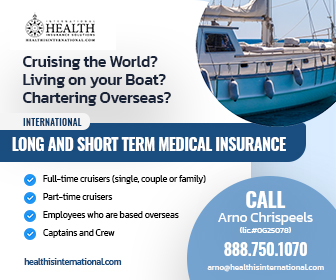How Boat Insurance for Inland Waterways is Calculated
Published 15 years ago, updated 6 years ago
This boat insurance article reviews the key price calculation factors that will ultimately determine the boat insurance quotation for the various types of inland waterways vessels. Whether you own a narrowboat, Dutch barge, houseboat or another type of canal going vessel in insurance terms the vast majority of boat insurance companies will categorize them as the same. The reason for this is partly due to simplicity (there are already too many boat types the boat insurance companies have to create and maintain boat insurance premium calculation rules for!), but actually, the key reason is that the inherent risk of a claim between these categories is very similar. Luckily whatever type of barge you own this immediately guarantees you lower rates of insurance levy, with fast powerboats/ yachts attracting the highest levies for obvious reasons (greater speed = a greater number of claims!).
Regardless of boat insurance category however all good boat insurance companies will firstly offer you the option of either comprehensive or third party only insurance. As you might expect this option is actually the single biggest criteria in determining your insurance cost as you are making a clearstaementof expectation upon the insurers whether or not they must pay a claim on one or two vessels in the event of an incident and you are found at fault.
Third party insurances are usually calculated at a fixed price, but assuming you select comprehensive insurance, the second key factor determining the price of any boat insurance quote is inevitably the total value of your vessel. Insurance companies literally take the value of the vessel (plus an additional quoted items you state for coverage e.g. generator, outboard) and multiply it by a specific percentage rate (i.e. vessel value x 0.#%). When it comes to inland waterways insurance the rate applied is normally fairly static however the rate can be on a sliding scale (i.e. reducing gradually for higher valued boats) but also age may well be classed as a factor (i.e. as boats age the probability of hull disrepair increases the likelihood of accidental sinking). The third key factor that will affect your quote will be (similar to most insurance types), years no claims bonus. Most insurers provide 5 years but some do provide 6 years. For each and every year without a claim a percentage will be knocked off your final insurance cost up to the maximum number of years. The remaining factors determining your insurance cost are often then optional. Clearly taking up additional optional items incurs a cost (or risk) for the insurer and as a result inevitably affects the price;
- Breakdown cover (this is usually a fixed price regardless of boat type)
- Internal contents cover (covers all non-essential belongings and equipment, read your small print(!)…the cost depends on the type and value of contents being covered & normally requires direct contact with insurance staff)
- No claims bonus protection (when available, it is costed at a fraction o fa percentage additional charge to the standard insurance rate)
Finally, there are also one or two other factors which may be taken into consideration (but this all depends on individual insurers) which perhaps don’t affect a majority but inevitably will affect some. For example, not having a mooring (roaming boats are of greater risk to insurers due to increased movement) or requirement for access to tidal areas e.g. on the River Severn near Gloucester, the UK for instance. Somewhat surprisingly whilst most insurers will stipulate an age of 18 or over, thereafter age is not a factor upon boat insurance cost. Those over 70, however, may find exemptions from personal injury claims.
This boat insurance pricing article is obviously based on UK inland waterway insurance but hopefully gives good insight into how most boat insurance quotations worldwide are actually calculated.
It was brought to you by Mercia Marine Boat Insurance, we pride ourselves on being open and honest with customers to generate long term goodwill! All information is provided with the best of intentions only we hope you find the information useful.
Related to the following Cruising Resources: Global Yachting Services, Insurance, Insurance, Yacht Insurance





